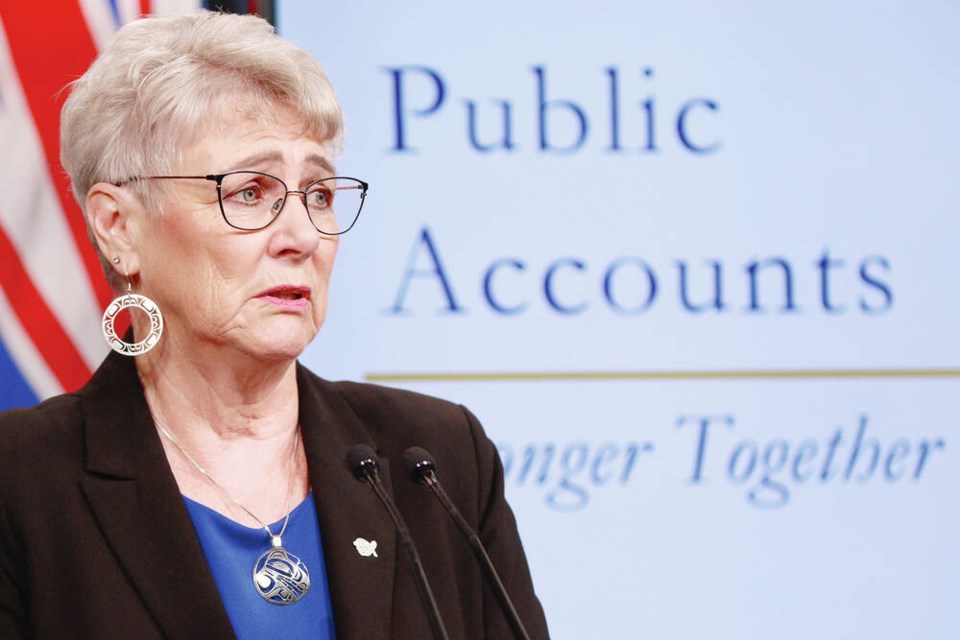B.C.’s speculation and vacancy tax, one of the province’s first measures to combat the housing crisis, will now apply to 13 more communities, including five on Vancouver Island.
Finance Minister Katrine Conroy announced Wednesday that homes in 59 B.C. cities and towns will now be subject to the tax.
Starting in 2025, homeowners in Courtenay, Comox and Cumberland, Parksville and Qualicum Beach will need to declare how they used their homes in the previous year.
The province’s levy on owners of empty homes in certain areas, including Greater Victoria, Nanaimo and parts of the Cowichan Valley, has collected $313 million since it was introduced in 2018.
Courtenay Mayor Bob Wells said Wednesday he’s “really happy” that his community now falls under speculation-tax rules, saying 3.1 per cent of private homes are sitting empty in the city and he is keen to see more become available.
The city had asked the province to be added to the list of communities where the speculation tax was applied, he said.
Despite the construction of many multi-family units, housing remains at a premium in Courtenay, where the rental vacancy rate averages 0.8 per cent, said Wells.
The city is also working to reduce red tape to improve processing times for development applications, he said.
Parksville Mayor Doug O’Brien said that community had not asked to be included but has no issue with the speculation tax, noting money from the tax goes into a housing fund. “I’m all for that,” he said.
The area between Nanaimo and Bowser to the north is where “a lot of the waterfront properties are and where a lot of the speculation is happening,” he said, adding many of those waterfront homes sit empty.
He noted, however, that the tax will now apply to Nanaimo and Parksville but not to the regional district area between them. That means in some cases, a property in the regional district will not be subject to the speculation tax while another across the street in Parksville will fall under rules, he said.
O’Brien said a development boom in the past year has nudged up the rental vacancy rate in the city, with the construction of an estimated 1,000 new units, including many apartment rentals. “We have attracted a lot of developers and they like how we turn the permits [applications] around so fast.”
Cumberland Mayor Vickey Brown said expanding the speculation and vacancy tax ensures houses are community homes rather than a “collection of assets.”
Conroy says independent data found the speculation tax helped increase the available rental stock in Metro Vancouver in 2020 by 20,000 units.
Other communities being brought under the speculation umbrella include Vernon, Penticton, Coldstream, Summerland, Lake Country, Peachland, Kamloops and Salmon Arm.
The tax is among a range of moves, many announced in recent weeks, the province is bringing in to address the shortage of affordable housing.
Housing Minister Ravi Kahlon says the government’s recent legislation restricting short-term rental accommodations in B.C. is already showing increases in long-term rental listings in Kelowna and Victoria, even though it doesn’t take effect until May 2024.
Other legislation would eliminate single-family zoning on most properties to allow fourplexes to sixplexes.
Nanaimo Mayor Leonard Krog has sent a letter on behalf of council to MLAs asking the province to consider amending the latter legislation to avoid boosting density in areas without sufficient infrastructure.
Nanaimo is suggesting allowing a municipality to identify parcels that would not be subject to small-scale multi-family housing, provided it had plans to meet expected housing needs.
The community would need to show how it planned to meet the province’s target for small-scale units in areas with enough sewer and water capacity, and include those areas in its official community plan.
Asked about the Nanaimo proposal, Kahlon said small-scale multi-family units are becoming more popular around the world because they require fewer infrastructure upgrades.
A report out of Metro Vancouver found that building multi-plexes is the most effective way to develop more housing without additional infrastructure, he said.




